Grow Lettuce Indoors Easily and enjoy fresh, crisp salads all year round, regardless of the weather outside! Have you ever dreamt of snipping fresh lettuce leaves right from your kitchen counter? Well, dream no more! This DIY guide is your ticket to a thriving indoor lettuce garden, offering a simple and rewarding experience for gardeners of all levels.
For centuries, cultivating greens has been a cornerstone of human sustenance. From ancient Roman gardens to medieval monastery plots, lettuce has held a significant place in our diets and cultures. Now, we’re bringing this tradition indoors, adapting it to modern lifestyles and limited spaces. Imagine the satisfaction of bypassing the grocery store and harvesting your own organic lettuce, free from pesticides and bursting with flavor!
In today’s fast-paced world, access to fresh, healthy produce can be a challenge. That’s where this DIY trick comes in. Learning how to grow lettuce indoors easily empowers you to take control of your food source, reduce your carbon footprint, and enjoy the therapeutic benefits of gardening, all within the comfort of your home. Plus, it’s a fantastic way to add a touch of green to your living space and impress your friends with your green thumb. So, let’s dive in and unlock the secrets to a bountiful indoor lettuce harvest!
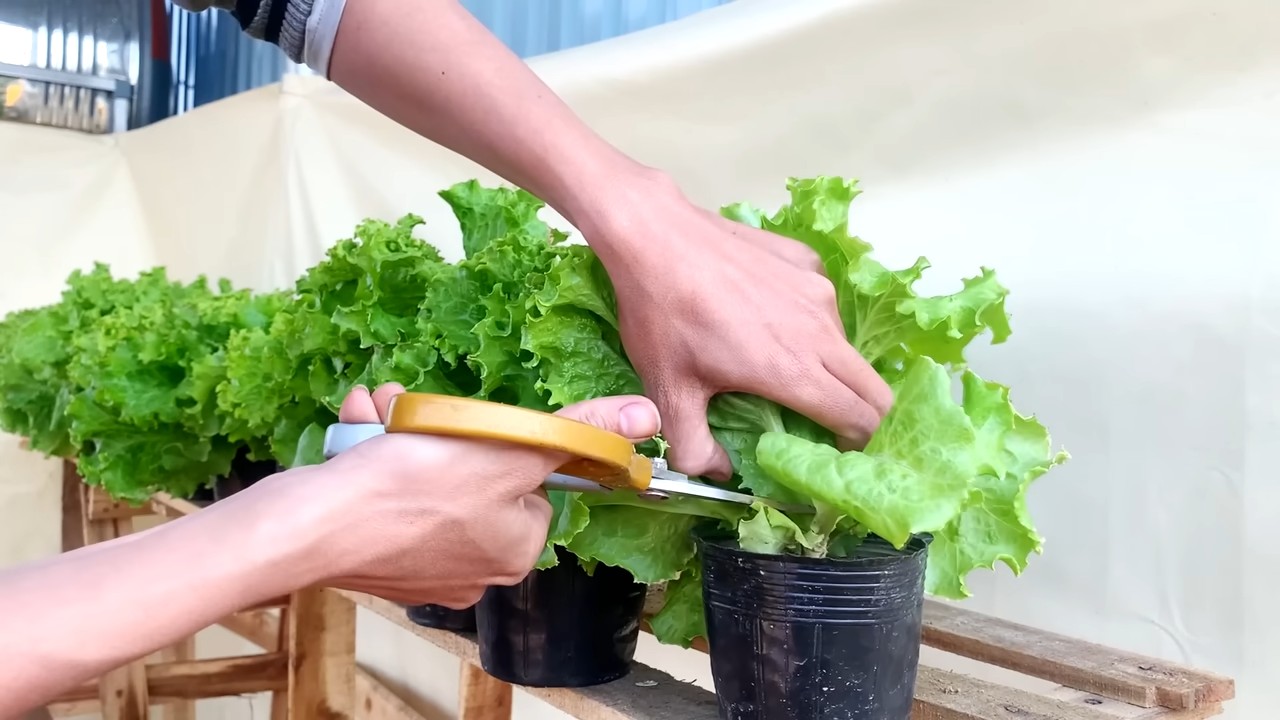
So einfach ziehst du Salat drinnen: Dein DIY-Guide für frischen Salat aus dem Fenster
Ich liebe frischen Salat, besonders im Winter, wenn die Auswahl im Supermarkt nicht so toll ist. Deshalb habe ich mich entschieden, meinen eigenen Salat drinnen anzubauen. Und rate mal was? Es ist super einfach! Ich zeige dir, wie du das auch schaffen kannst, ganz ohne grünen Daumen.
Was du brauchst: Deine Einkaufsliste für den Indoor-Salatgarten
Bevor wir loslegen, brauchst du ein paar Dinge. Keine Sorge, die meisten davon hast du wahrscheinlich schon zu Hause oder kannst sie günstig besorgen.
* Salatsamen: Wähle deine Lieblingssorten! Pflücksalat, Römersalat, Feldsalat – alles ist möglich. Ich persönlich mag eine Mischung, damit es nicht langweilig wird.
* Anzuchterde: Normale Blumenerde ist zu schwer für die zarten Keimlinge. Anzuchterde ist locker und nährstoffarm, ideal für den Start.
* Anzuchttöpfe oder -schalen: Du kannst spezielle Anzuchttöpfe kaufen, aber auch leere Joghurtbecher oder Eierkartons funktionieren super. Hauptsache, sie haben Löcher im Boden, damit das Wasser ablaufen kann.
* Eine Sprühflasche: Damit kannst du die Erde feucht halten, ohne die Samen wegzuschwemmen.
* Eine helle Fensterbank oder eine Pflanzenlampe: Salat braucht Licht, um zu wachsen. Eine sonnige Fensterbank ist perfekt, aber wenn du nicht genug Licht hast, ist eine Pflanzenlampe eine tolle Alternative.
* Eine größere Pflanzschale oder Töpfe: Wenn die Salatpflänzchen größer werden, brauchen sie mehr Platz.
* Blumenerde: Für das Umtopfen in die größeren Töpfe.
* Optional: Flüssigdünger: Für eine extra Portion Nährstoffe, wenn der Salat etwas schlapp aussieht.
Phase 1: Die Aussaat – Der Start in dein Salat-Abenteuer
Jetzt geht’s los mit dem eigentlichen Anbau! Die Aussaat ist der erste Schritt und gar nicht schwer.
1. Vorbereitung der Anzuchttöpfe: Fülle die Anzuchttöpfe oder -schalen mit Anzuchterde. Drücke die Erde leicht an.
2. Aussaat der Samen: Verteile die Salatsamen gleichmäßig auf der Erde. Achte darauf, dass sie nicht zu dicht liegen, sonst haben die Pflänzchen später zu wenig Platz. Ich säe meistens 2-3 Samen pro Töpfchen.
3. Bedecken der Samen: Bedecke die Samen mit einer dünnen Schicht Anzuchterde. Die Samen sollten nur leicht bedeckt sein, da sie Licht zum Keimen brauchen.
4. Bewässerung: Befeuchte die Erde vorsichtig mit der Sprühflasche. Die Erde sollte feucht, aber nicht nass sein.
5. Der Standort: Stelle die Anzuchttöpfe an einen hellen und warmen Ort. Eine Fensterbank ist ideal. Die ideale Keimtemperatur liegt bei etwa 15-20 Grad Celsius.
6. Geduld ist gefragt: Jetzt heißt es warten. Die Samen keimen in der Regel innerhalb von 5-10 Tagen. Halte die Erde währenddessen feucht.
Phase 2: Die Pflege der Keimlinge – Vom zarten Pflänzchen zum kräftigen Salat
Sobald die ersten grünen Spitzen aus der Erde kommen, beginnt die eigentliche Pflege.
1. Licht: Achte darauf, dass die Keimlinge genügend Licht bekommen. Wenn sie zu wenig Licht haben, werden sie lang und dünn. Drehe die Töpfe regelmäßig, damit die Pflänzchen nicht zum Licht wachsen und krumm werden.
2. Bewässerung: Gieße die Keimlinge regelmäßig, aber nicht zu viel. Die Erde sollte immer leicht feucht sein. Vermeide Staunässe, da dies zu Wurzelfäule führen kann. Ich gieße meistens alle 2-3 Tage, je nachdem, wie schnell die Erde austrocknet.
3. Vereinzeln: Wenn mehrere Samen in einem Töpfchen gekeimt sind, solltest du die schwächsten Pflänzchen entfernen, damit die stärksten genug Platz haben. Das nennt man Vereinzeln.
4. Düngen (optional): Wenn die Keimlinge etwas blass aussehen, kannst du sie mit einem milden Flüssigdünger düngen. Achte darauf, dass der Dünger für Gemüse geeignet ist.
Phase 3: Das Umtopfen – Mehr Platz für Wachstum
Wenn die Salatpflänzchen groß genug sind (etwa 5-7 cm hoch), ist es Zeit, sie in größere Töpfe umzutopfen.
1. Vorbereitung der Töpfe: Fülle die größeren Töpfe mit Blumenerde.
2. Umtopfen: Hebe die Salatpflänzchen vorsichtig aus den Anzuchttöpfen. Achte darauf, die Wurzeln nicht zu beschädigen.
3. Einsetzen: Setze die Pflänzchen in die neuen Töpfe und fülle die Töpfe mit Erde auf. Drücke die Erde leicht an.
4. Bewässerung: Gieße die umgetopften Pflänzchen gut an.
5. Der Standort: Stelle die Töpfe wieder an einen hellen Ort.
Phase 4: Die Ernte – Endlich frischer Salat!
Nach ein paar Wochen kannst du endlich deinen eigenen Salat ernten!
1. Erntezeitpunkt: Der Zeitpunkt der Ernte hängt von der Salatsorte ab. Pflücksalat kannst du schon ernten, wenn die Blätter groß genug sind. Römersalat erntest du, wenn er einen festen Kopf gebildet hat.
2. Erntemethode: Pflücksalat kannst du einfach Blatt für Blatt ernten. Römersalat schneidest du am besten mit einem Messer ab.
3. Regelmäßige Ernte: Ernte den Salat regelmäßig, damit er nicht zu groß wird und bitter schmeckt.
4. Genießen: Wasche den Salat gründlich und genieße ihn frisch!
Zusätzliche Tipps für deinen Indoor-Salatgarten
* Schädlinge: Achte auf Schädlinge wie Blattläuse. Wenn du welche entdeckst, kannst du sie mit einem Wasserstrahl abspülen oder mit einem biologischen Schädlingsbekämpfungsmittel behandeln.
* Belüftung: Sorge für eine gute Belüftung, um Schimmelbildung zu vermeiden.
* Sortenwahl: Nicht alle Salatsorten sind gleich gut für den Indoor-Anbau geeignet. Pflücksalat und Feldsalat sind besonders einfach anzubauen.
* Kontinuierliche Aussaat: Säe regelmäßig neue Samen aus, damit du immer frischen Salat hast.
* Pflanzenlampe: Wenn du nicht genug natürliches Licht hast, ist eine Pflanzenlampe eine tolle Investition. Sie sorgt für das richtige Lichtspektrum und fördert das Wachstum der Pflanzen.
* Hydrokultur: Wenn du etwas experimentierfreudiger bist, kannst du deinen Salat auch in Hydrokultur anbauen. Dabei wachsen die Pflanzen in Wasser mit Nährstoffen, ohne Erde.
Häufige Fehler vermeiden: Meine Erfahrungen
Ich habe auch ein paar Fehler gemacht, als ich angefangen habe, Salat drinnen anzubauen. Hier sind ein paar Tipps, wie du sie vermeiden kannst:
* Zu viel gießen: Das ist ein häufiger Fehler. Die Erde sollte feucht, aber nicht nass sein. Staunässe führt zu Wurzelfäule.
* Zu wenig Licht: Salat braucht viel Licht. Wenn er zu wenig Licht bekommt, wird er lang und dünn.
* Falsche Erde: Normale Blumenerde ist zu schwer für die zarten Keimlinge. Verwende Anzuchterde für die Aussaat und Blumenerde für das Umtopfen.
* Nicht regelmäßig ernten: Wenn du den Salat nicht regelmäßig erntest, wird er zu groß und bitter.
Ich hoffe, dieser Guide hilft dir dabei, deinen eigenen Salat drinnen anzubauen. Es ist wirklich einfach und macht Spaß! Und das Beste daran: Du hast immer frischen Salat zur Hand, egal welches Wetter draußen ist. Viel Erfolg!
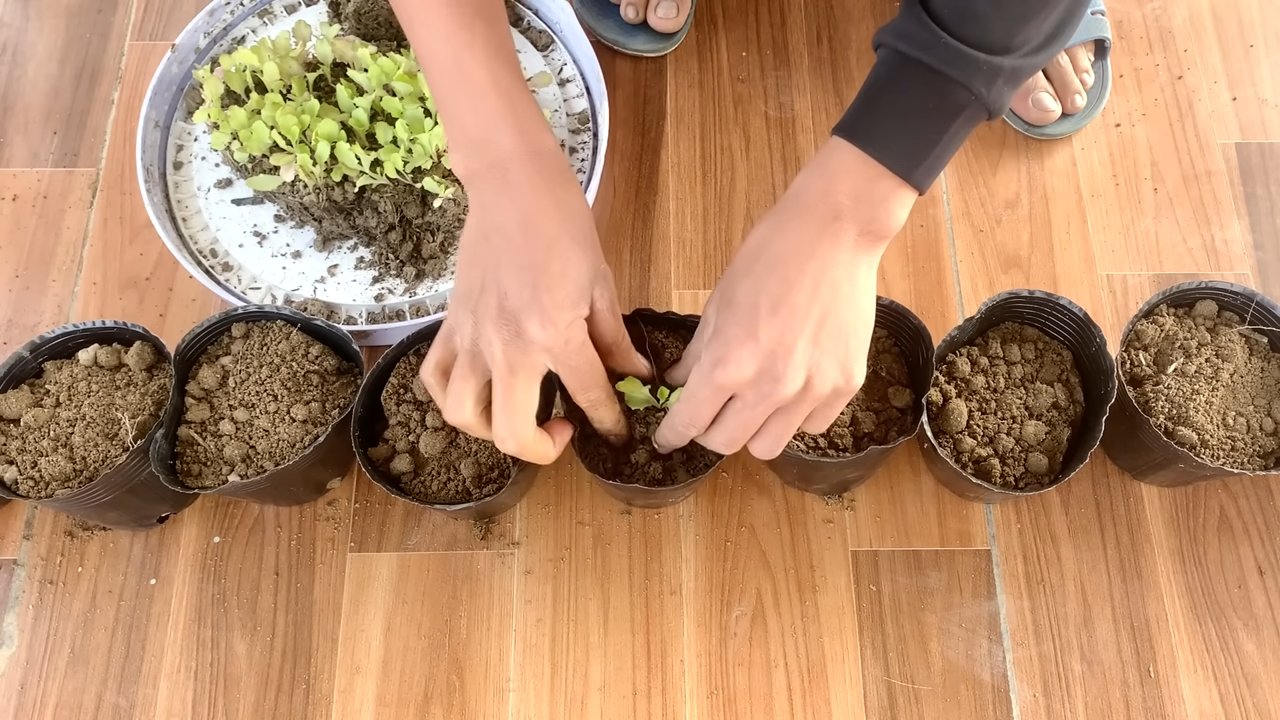
Conclusion
So, there you have it! Growing lettuce indoors easily is not just a pipe dream; it’s an achievable reality that can bring fresh, vibrant greens to your table year-round. We’ve walked through the simple steps, from choosing the right lettuce varieties to providing adequate light and water. But why is this DIY trick a must-try?
Firstly, consider the unparalleled freshness. Store-bought lettuce, even the organic kind, often travels long distances and sits on shelves for days, losing its crispness and nutritional value. With your own indoor lettuce garden, you can harvest leaves just moments before you need them, ensuring peak flavor and maximum vitamin content. Imagine the satisfaction of adding a handful of freshly picked, vibrant green lettuce to your salad, knowing exactly where it came from and how it was grown.
Secondly, think about the cost savings. While there’s an initial investment in supplies like grow lights and containers, the long-term savings on groceries can be significant. Lettuce seeds are inexpensive, and a single packet can yield multiple harvests. Plus, you’re reducing your reliance on commercially grown produce, which is often subject to price fluctuations and seasonal availability.
Thirdly, and perhaps most importantly, growing lettuce indoors easily is incredibly rewarding. It’s a tangible connection to nature, a chance to nurture something from seed to harvest, and a source of immense personal satisfaction. It’s also a fantastic educational opportunity for children, teaching them about plant life cycles, responsibility, and the importance of healthy eating.
But don’t stop there! Experiment with different lettuce varieties to discover your favorites. Try adding companion plants like basil or chives to your indoor garden to enhance the flavor of your lettuce and deter pests. Consider using hydroponic systems for even faster growth and higher yields. You can even explore different lighting options, such as LED grow lights with adjustable spectrums, to optimize your lettuce’s growth and development.
We encourage you to take the plunge and start your own indoor lettuce garden today. It’s easier than you think, and the rewards are well worth the effort. Once you’ve experienced the joy of harvesting your own fresh lettuce, you’ll never look at store-bought greens the same way again.
And most importantly, we want to hear about your experiences! Share your tips, tricks, and photos with us in the comments below. Let’s build a community of indoor lettuce growers and learn from each other. What varieties have you had the most success with? What challenges have you faced, and how did you overcome them? Your insights can help others embark on their own indoor lettuce growing journey. So, get growing, get sharing, and get ready to enjoy the freshest, most delicious lettuce you’ve ever tasted!
Frequently Asked Questions (FAQ)
What are the best lettuce varieties to grow indoors?
The best lettuce varieties for indoor growing are typically loose-leaf types, as they are easy to harvest and regrow. Some excellent choices include:
* Black Seeded Simpson: A classic, fast-growing variety with a mild flavor.
* Red Sails: A beautiful, reddish-bronze lettuce with a slightly nutty taste.
* Buttercrunch: A buttery-textured lettuce with a sweet, delicate flavor.
* Romaine (Dwarf Varieties): Compact romaine varieties like ‘Little Gem’ are well-suited for containers.
* Oak Leaf: A mild-flavored lettuce with distinctive oak leaf-shaped leaves.
These varieties are generally quick to mature and can be harvested multiple times, making them ideal for indoor cultivation.
How much light does indoor lettuce need?
Lettuce requires at least 12-14 hours of light per day to thrive indoors. Natural sunlight from a south-facing window may be sufficient during the summer months, but supplemental lighting is usually necessary, especially during the winter. LED grow lights are an excellent choice, as they are energy-efficient and provide the full spectrum of light that lettuce needs. Position the lights a few inches above the lettuce plants and adjust as they grow. If you notice the leaves stretching towards the light, it indicates that they are not getting enough illumination.
How often should I water my indoor lettuce?
The frequency of watering depends on several factors, including the type of container, the growing medium, and the ambient temperature. Generally, you should water your lettuce when the top inch of soil feels dry to the touch. Avoid overwatering, as this can lead to root rot. Ensure that your containers have drainage holes to allow excess water to escape. A good rule of thumb is to water thoroughly until water drains out of the bottom of the container, then allow the soil to dry slightly before watering again.
What kind of soil should I use for growing lettuce indoors?
Use a well-draining potting mix that is specifically formulated for containers. Avoid using garden soil, as it can be too heavy and may not drain properly. A good potting mix will contain a blend of peat moss, perlite, and vermiculite, which provides good aeration and drainage. You can also add compost to the potting mix to provide additional nutrients.
How do I harvest lettuce from my indoor garden?
Harvest lettuce by cutting the outer leaves with a sharp knife or scissors, leaving the inner leaves to continue growing. This is known as “cut-and-come-again” harvesting. You can harvest lettuce multiple times from the same plant, extending its lifespan. Avoid harvesting more than one-third of the plant at a time, as this can stress the plant and reduce its yield.
How do I prevent pests and diseases in my indoor lettuce garden?
Indoor lettuce gardens are generally less susceptible to pests and diseases than outdoor gardens, but it’s still important to take precautions. Inspect your plants regularly for signs of pests, such as aphids, spider mites, or whiteflies. If you find any pests, you can try washing them off with a strong stream of water or using insecticidal soap. To prevent diseases, ensure that your plants have good air circulation and avoid overwatering. You can also use a fungicide if necessary.
Can I grow lettuce indoors without grow lights?
While it’s possible to grow lettuce indoors without grow lights, it’s more challenging and the results may be less consistent. Lettuce needs a significant amount of light to thrive, and natural sunlight may not be sufficient, especially during the winter months. If you choose to grow lettuce without grow lights, place your plants in a south-facing window that receives at least 6 hours of direct sunlight per day. You may also need to rotate the plants regularly to ensure that all sides receive adequate light.
How long does it take for lettuce to grow indoors?
The time it takes for lettuce to grow indoors depends on the variety, the growing conditions, and the size of the plant you want to harvest. Generally, you can expect to harvest your first leaves in about 30-45 days from planting. Loose-leaf varieties tend to mature faster than head lettuce varieties.
Can I grow lettuce indoors hydroponically?
Yes, lettuce is an excellent choice for hydroponic growing. Hydroponics is a method of growing plants without soil, using nutrient-rich water solutions. Hydroponic systems can provide faster growth and higher yields than traditional soil-based methods. There are many different types of hydroponic systems that you can use to grow lettuce indoors, including deep water culture, nutrient film technique, and aeroponics.
What are some common problems when growing lettuce indoors and how can I fix them?
Some common problems include:
* Leggy growth: This indicates insufficient light. Provide more light or move the plants closer to the light source.
* Yellowing leaves: This can be caused by overwatering, underwatering, or nutrient deficiencies. Adjust your watering schedule and consider adding a balanced fertilizer.
* Pests: Inspect plants regularly and treat infestations promptly with insecticidal soap or other appropriate methods.
* Bolting: This occurs when lettuce plants flower prematurely, making the leaves bitter. It’s often caused by high temperatures or stress. Keep the growing environment cool and provide adequate water and nutrients.
By addressing these common problems promptly, you can ensure a successful and bountiful indoor lettuce harvest.


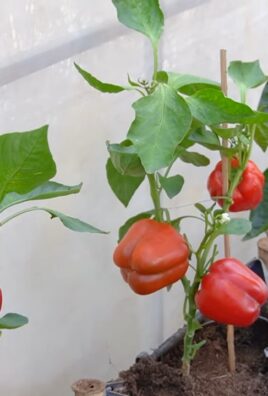
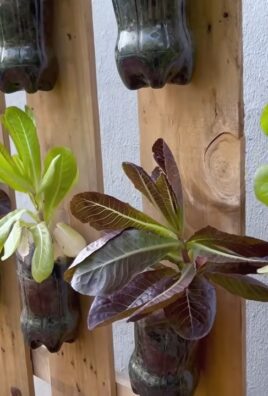
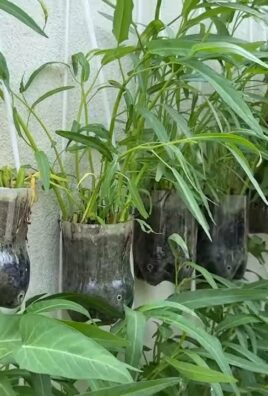
Leave a Comment